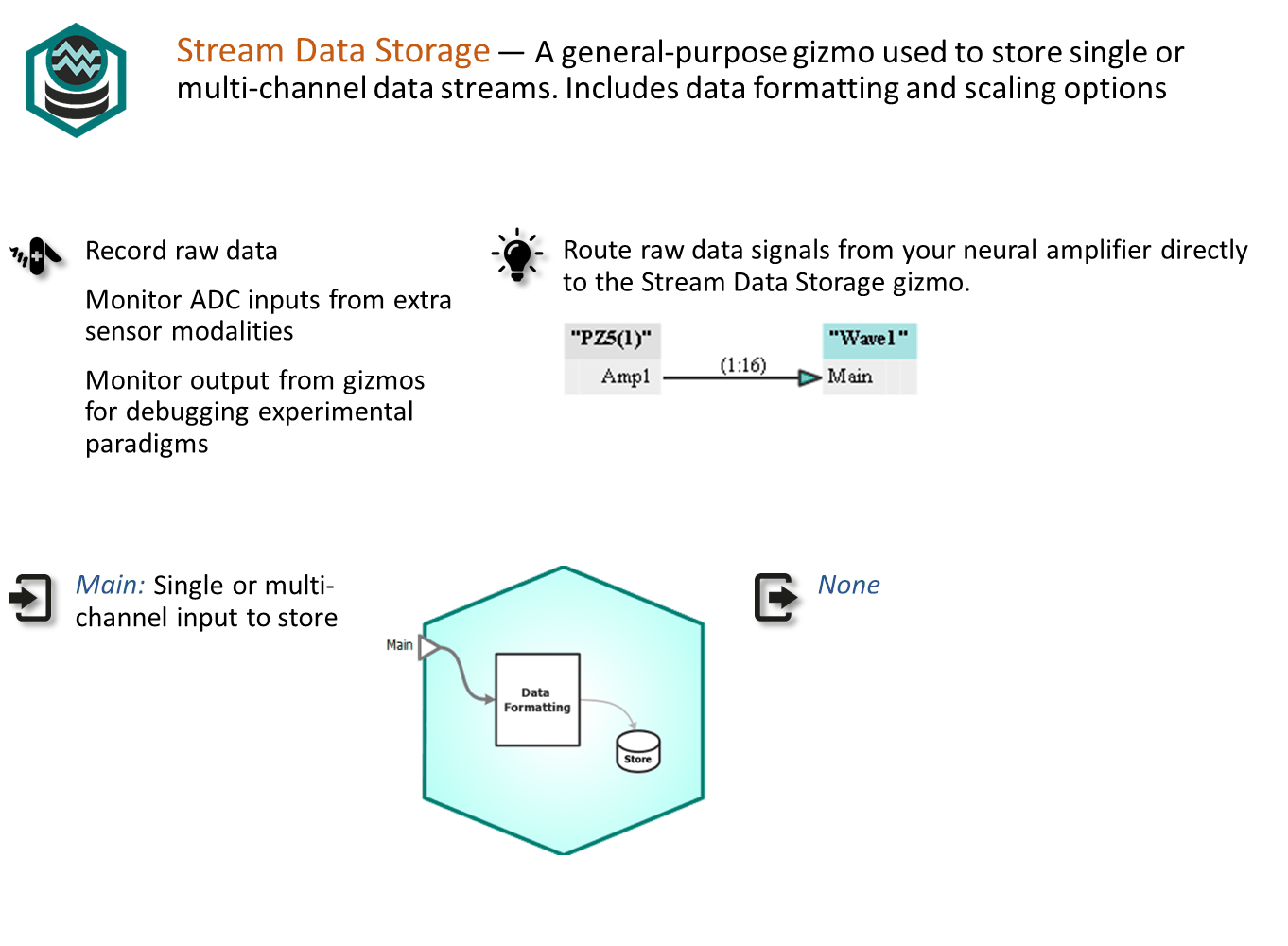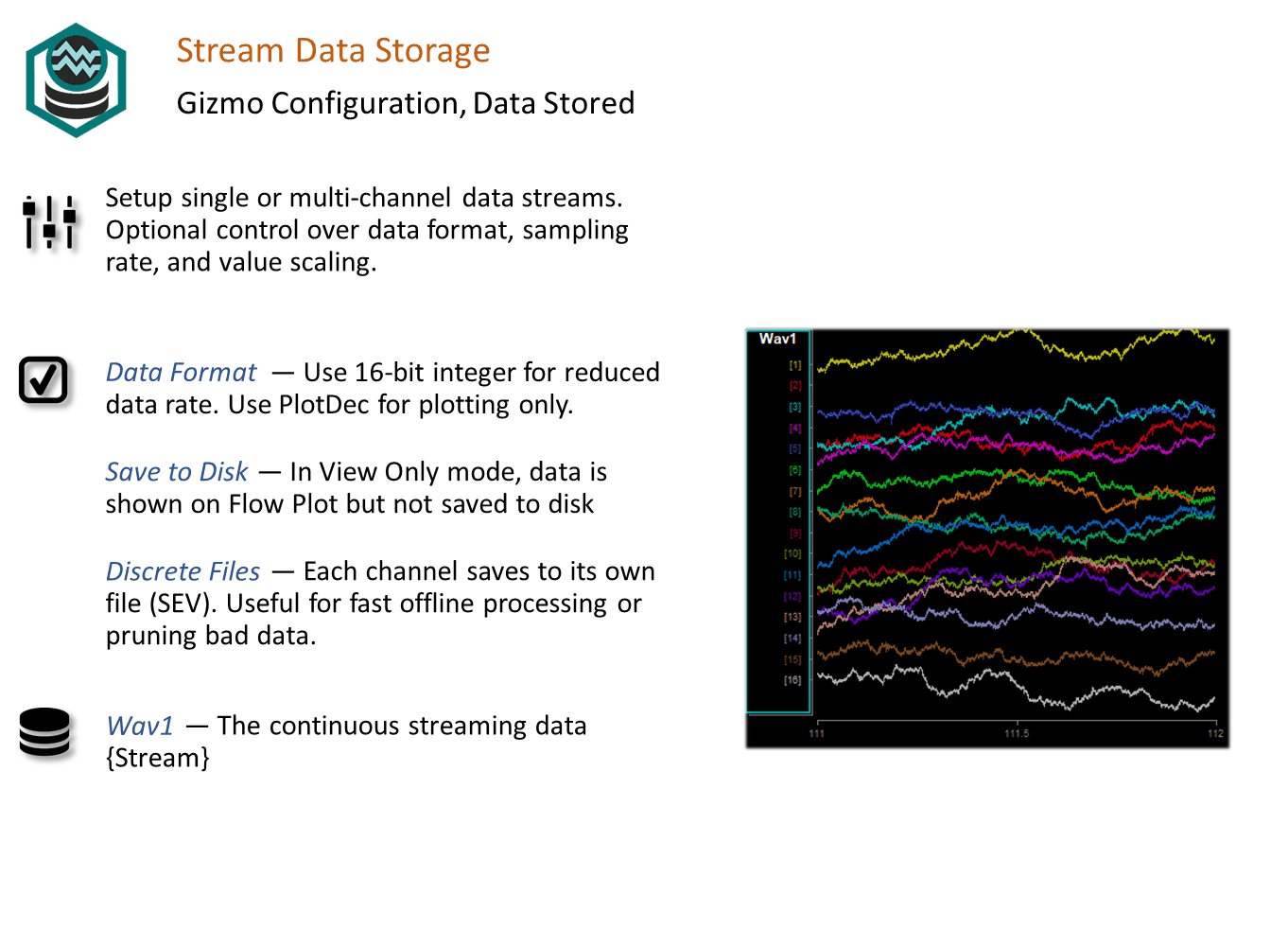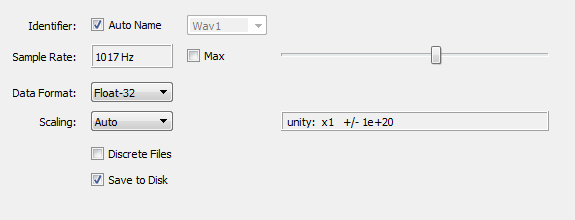Stream Data Storage
Common Use Cases
Timestamp and store single or multi-channel data when triggered. Use this gizmo to capture behavioral inputs or stimulus parameters to filter and align neurophysiological data.
Gizmo Help Slides


Reference
The Stream Data Storage gizmo is a general purpose data streaming tool that includes options for data format and scaling.
This gizmo stores streamed data in the data tank. Raw waveforms can be saved as 16- or 32-bit floating point values or as integers. The plot decimated waveforms format (PlotDec-16) is a 16-bit representation of the waveform using maximum and minimum values and is used to visualize spike activity.
Important
PlotDec-16 format is for visualization only. It is not recommended that you store data in this format. It is highly compressed for plotting purposes and has no use in offline analysis.
The Runtime Interface
Runtime Plot
A multichannel streamed plot is included in the runtime plot. There are no runtime controls for this gizmo, and it has no outputs available to other gizmos.
See Flow Plot for more information on using and customizing the plot.
Stream Storage Configuration Options
 |
| Storage Options |
The Identifier is used to name the data store that is saved in the tank. It must be four characters in length.
Choose a specific Sample Rate for the data store, or set it to Max and it will run at the Master Device Rate set in the parent RZ or RX processor.
Choose the desired units to apply an appropriate scaling factor to the data.
Select Discrete Files to save each channel of data as an individual file (*.sev format) in the data tank. This is useful if you need to clear space by deleting individual channels, or if your post-processing works on individual channels it can be faster to read them this way.
Clear the Save to Disk check box to view data in the runtime plots without storing data to the Tank.